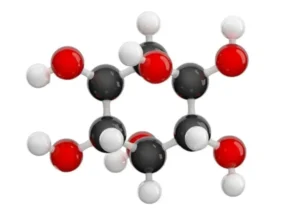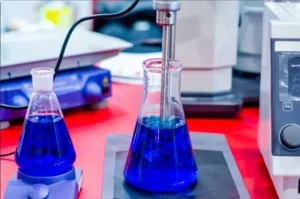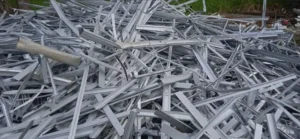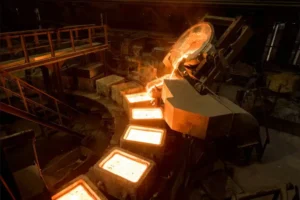Trong lĩnh vực cảm ứng tan chảy, một quan niệm sai lầm phổ biến là việc tăng công suất của lò cảm ứng vô hạn sẽ làm tăng tuyến tính tốc độ nóng chảy. Tuy nhiên, sự thật không đơn giản như vậy. Trong khi công suất là yếu tố quan trọng quyết định tốc độ nóng chảy, chỉ theo đuổi công suất cao không những không đạt được hiệu suất nấu chảy mong muốn mà còn có thể dẫn đến lãng phí năng lượng điện nghiêm trọng và “đốt cháy quá mức” của kim loại nóng chảy, cuối cùng gây hại nhiều hơn lợi. Để tăng tốc độ nóng chảy một cách khoa học, người ta phải xem xét một cách tổng thể ba yếu tố cốt lõi: mật độ năng lượng, thiết kế lò, Và hiệu suất năng lượng.
Mật độ điện năng: Chìa khóa để cân bằng tốc độ và chất lượng nóng chảy
Mật độ năng lượng là thước đo cốt lõi để đánh giá hiệu suất lò cảm ứng. Nó đề cập đến công suất hiệu dụng có thể được hấp thụ trên một đơn vị khối lượng hoặc thể tích của kim loại trong bể nóng chảy., typically measured in units of kW/kg or kW/m3. For a furnace of a given capacity, a higher power configuration results in a greater power density.
- Reasonable Power Density: Within a certain range, increasing power density does effectively shorten the melting time and boost production efficiency. This is because a higher energy input rate can quickly overcome the heat loss through the furnace lining and meet the demands of the metal’s sensible and latent heat, thus accelerating the melting process.
- Excessive Power Density: Tuy nhiên, when the power density exceeds a reasonable threshold, its negative effects begin to emerge. Due to the “Hiệu ứng da” of electromagnetic induction, the current becomes highly concentrated on the surface of the molten metal. Mật độ năng lượng quá cao khiến nhiệt độ bề mặt của kim loại lỏng tăng mạnh, vượt xa nhiệt độ bên trong của nó. Sự chênh lệch nhiệt độ mạnh mẽ này không góp phần làm tan chảy tổng thể mà thay vào đó tạo ra những vấn đề nghiêm trọng.
Những hạn chế của việc chỉ theo đuổi quyền lực cao
1. Lãng phí năng lượng và giảm hiệu quả
Việc chỉ tăng công suất đầu ra của tủ cấp điện mà không tối ưu hóa thiết kế lò phù hợp sẽ làm giảm đáng kể hiệu quả sử dụng năng lượng điện.
- Hiệu suất điện giảm: Lò cảm ứng là một tải cảm ứng, vốn dĩ có hệ số công suất thấp. Mặc dù được bù bằng tụ điện, Cấu hình công suất quá lớn và thiết kế lò không hợp lý làm tăng tổn thất công suất phản kháng và tổn thất nhiệt trong cuộn dây và cáp, dẫn đến giảm hiệu suất điện. Điều này có nghĩa là một phần đáng kể công suất tăng thêm không được chuyển thành nhiệt hiệu dụng mà thay vào đó bị tiêu tán dưới dạng nhiệt thải và công suất phản kháng., lãng phí điện.
- giảm Hiệu suất nhiệt: Nhiệt độ bề mặt quá cao làm trầm trọng thêm sự mất nhiệt từ kim loại nóng chảy thông qua sự dẫn truyền đến lớp lót, và thông qua bức xạ và đối lưu với không khí. Khi điện tích bắt đầu tan chảy và tạo thành một hồ nóng chảy, nhiệt chủ yếu được truyền đến vật liệu rắn bên dưới thông qua sự đối lưu và dẫn nhiệt. Nếu nhiệt độ bề mặt quá cao, một lượng nhiệt lớn bị thất thoát khỏi bề mặt chất lỏng và miệng lò thay vì được sử dụng để nấu chảy kim loại rắn, do đó làm giảm hiệu suất nhiệt.
2. Đốt cháy kim loại và suy giảm chất lượng
“Đốt cháy kim loại” là hậu quả nghiêm trọng nhất của việc chỉ theo đuổi quyền lực cao, vì nó trực tiếp làm hỏng chất lượng của kim loại nóng chảy.
- Mất các yếu tố hợp kim: Ở nhiệt độ quá cao (đặc biệt là trên bề mặt tan chảy), nguyên tố hợp kim hoạt động trong kim loại, chẳng hạn như cacbon (C), silic (Và), và mangan (Mn), sẽ oxy hóa mạnh với oxy trong môi trường lò. Điều này tạo thành các oxit đi vào xỉ, gây ra sự mất mát các nguyên tố này và ảnh hưởng đến độ chính xác của thành phần hợp kim.
- Hấp thụ khí và vùi: Kim loại nóng chảy ở nhiệt độ cao sẽ hấp thụ một lượng lớn khí như oxy và nitơ từ không khí, dẫn đến các khuyết tật như độ xốp và khoảng trống trong lần đúc cuối cùng. Đồng thời, quá trình oxy hóa bề mặt mạnh mẽ tạo ra nhiều tạp chất oxit hơn, làm ô nhiễm kim loại nóng chảy và làm giảm tính chất cơ học của vật liệu.
- Xói mòn lớp lót: Nhiệt độ cục bộ quá cao cũng làm tăng tốc độ ăn mòn hóa học và vật lý của lớp lót lò bởi kim loại nóng chảy., rút ngắn tuổi thọ của lớp lót và tăng chi phí bảo trì cũng như nguy cơ ngừng hoạt động.
Tầm quan trọng của thiết kế lò và hiệu quả năng lượng
Để đạt được hiệu quả, tan chảy chất lượng cao, công suất phải phù hợp một cách có hệ thống với thiết kế lò.
- Thiết kế lò nung
- Khớp nối Hiệu suất của cuộn dây và buồng: Số lượt, khoảng cách, và đường kính trong của cuộn dây cảm ứng, cũng như khoảng cách của nó với điện tích (hoặc hồ nóng chảy), xác định chung cường độ của từ trường và hiệu suất truyền năng lượng. Một thiết kế tối ưu hóa cho phép các đường sức từ tập trung hơn trong điện tích, giảm rò rỉ từ thông và cải thiện hiệu quả ghép.
- Độ dày và chất liệu lót: Độ dày lớp lót hợp lý tạo ra sự cân bằng giữa độ an toàn cách nhiệt và hiệu quả cách nhiệt. Lớp lót quá dày sẽ làm tăng khả năng che chắn điện từ và giảm hiệu suất điện, trong khi cái quá mỏng có thể làm tăng tổn thất nhiệt và rủi ro về an toàn. Sử dụng vật liệu chịu lửa có độ dẫn nhiệt thấp giúp giảm khả năng tản nhiệt.
- Hiệu suất năng lượng
- Hiệu quả tổng thể: Hiệu suất năng lượng của lò cảm ứng là tích của hiệu suất điện và hiệu suất nhiệt. Để tăng tốc độ nóng chảy, mục tiêu nên là tăng sức mạnh hiệu quả, không chỉ là công suất đầu ra của việc cung cấp. Điều này đòi hỏi phải nâng cao hiệu quả tổng thể bằng cách tối ưu hóa các thông số điện (như tăng hệ số công suất) và kết cấu lò (như giảm tổn thất nhiệt).
Phần kết luận
Tóm lại, cho lò cảm ứng, nhiều quyền lực hơn không phải lúc nào cũng tốt hơn. Xem sức mạnh là phương tiện duy nhất để tăng tốc độ nóng chảy là quan điểm phiến diện và bất lợi. Cách tiếp cận đúng là tìm kiếm sự phù hợp về mật độ năng lượng tối ưu đáp ứng yêu cầu về tiến độ sản xuất. Điều này đòi hỏi phải tính toán chính xác trong giai đoạn thiết kế lò để đảm bảo cuộn dây cảm ứng và cấu trúc lò có thể chuyển đổi hiệu quả năng lượng điện thành nhiệt cần thiết để nấu chảy.. Đồng thời, nên áp dụng quy trình nấu chảy hợp lý trong quá trình vận hành để tránh sử dụng công suất tối đa một cách mù quáng trong thời gian dài chỉ để chạy theo tốc độ. Chỉ bằng cách tích hợp sức mạnh một cách hữu cơ, thiết kế, và hiệu quả có thể đạt được sự nấu chảy thực sự kinh tế và hiệu quả đồng thời đảm bảo chất lượng kim loại và an toàn sản xuất.







